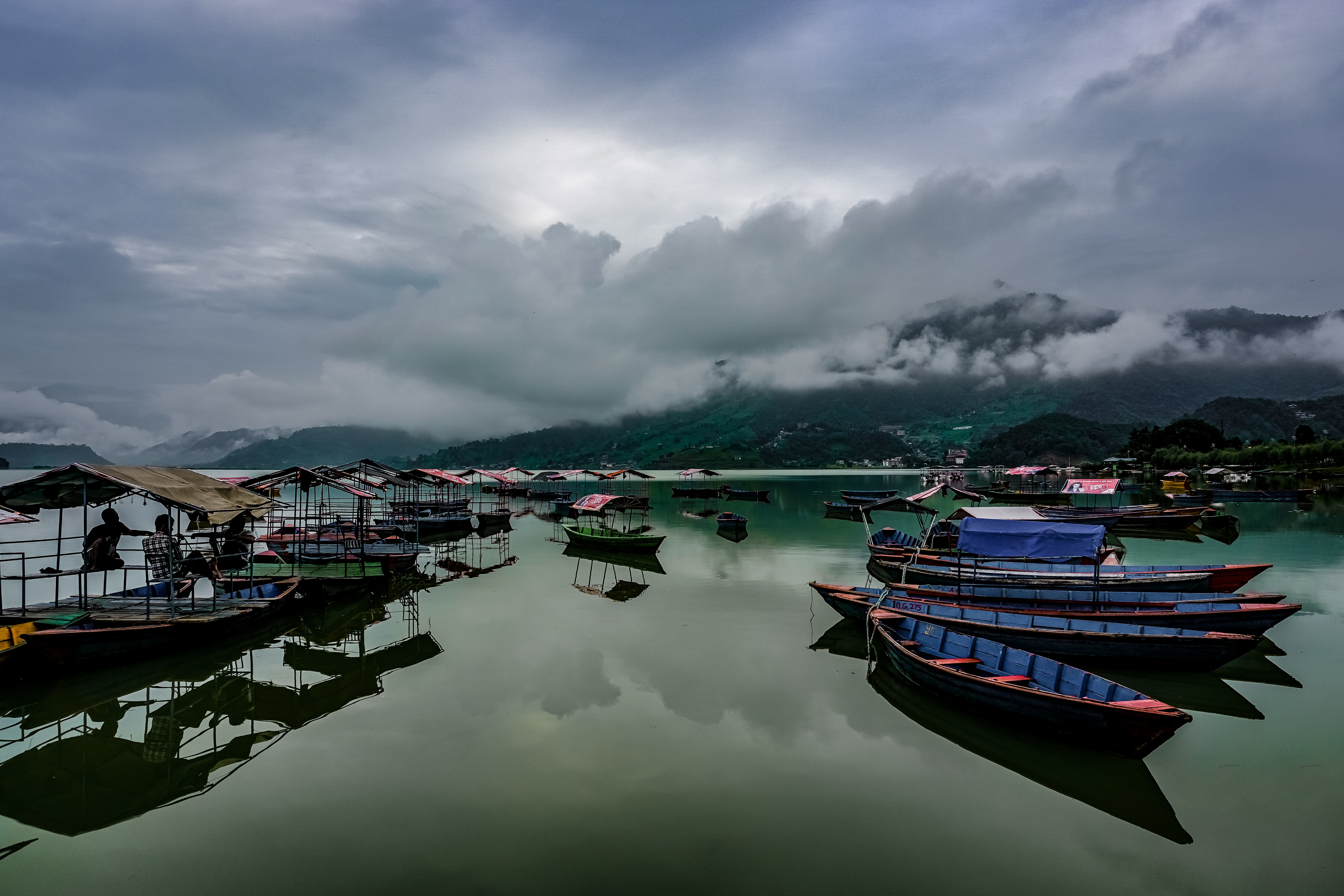Explore All Nepal
Pokhara is a heart of Nepal.

Pokhara (Nepali: पोखरा, Nepali pronunciation: [ˈpokʰʌɾa]) is
a metropolitan city in Nepal, which serves as the capital of Gandaki Province.
It is the second most populous city of Nepal after Kathmandu, with 518,452 inhabitants living in 101,669 households in 2021.
It is the country's largest metropolitan city in terms of area. The city also serves as the headquarters of Kaski District.
Pokhara is located 200 kilometres (120 miles) west of the capital, Kathmandu. The city is on the shore of Phewa Lake,
and sits at an elevation of approximately 822m.
The Annapurna Range, with three out of the ten highest peaks in the world—Dhaulagiri, Annapurna
I and Manaslu—is within 15–35 mi (24–56 km) of the valley. /n/n
Pokhara is considered the tourism capital of Nepal,
being a base for trekkers undertaking the Annapurna Circuit through the
Annapurna Conservation Area region of the Annapurna ranges in the Himalayas.
The city is also home to many of the elite Gurkha soldiers, soldiers native to South Asia of Nepalese nationality
recruited for the British Army, Nepalese Army, Indian Army, Gurkha Contingent Singapore, Gurkha Reserve Unit Brunei,
UN peacekeeping forces and in war zones around the world.
Pokhara’s tranquil beauty has been the subject of inspiration for many travel writers. Its pristine air, spectacular backdrop of snowy peaks, blue lakes and surrounding greenery make it ‘the jewel in the Himalaya’, a place of remarkable natural disposition. With the magnificent Annapurna range forming the backdrop and the serenity of the Cluster of 9 Lakes with three major ones - Phewa, Rupa and Begnas – Pokhara is a great destination for a weekend getaway as well as a long relaxing holiday. Pokhara Valley, gateway to the Annapurna region where many a trekker finds his Shangri-la, sits high on the list of ‘must visit’ places in Nepal.
Pokhara once lay on the important trade route between India and Tibet. To this day, mule trains set up camps on the city outskirts, bringing goods from remote Himalayan regions including Mustang. Gurungs and Magars, who have earned world-wide fame as fierce Gurkha warriors, are predominant here. Thakalis, indigenous of the Thak Khola region of Mustang, are known for their entrepreneurship and run tea houses along the trek routes in the Annapurna region. The Pokhara is best known for the stunning view of the Annapurna range. It is perhaps one of the few places on earth from where mountains above 6,000 m can be seen unobstructed from an altitude of 800 m within the distance of 28 km. (source: https://ntb.gov.np/pokhara)
Pokhara may not seem far from Kathmandu (the cities are only 126 miles / 204 km apart), but the Nepali terrain and road quality make for a very long drive. That's why many travelers opt to fly. Here are your options for traveling between the two cities, either by air or road.
1. By Flight (30 minutes)
Flying is by far the quickest and most comfortable way of traveling between Kathmandu and Pokhara and highly recommended if you're short on time. Numerous flights leave each day from the domestic terminal of Tribhuvan Airport and take only around 30 minutes. It's a very scenic flight, especially if you sit on the right-hand side of the plane, so you can see the Himalaya. When flying, you're likely to arrive feeling energetic and with plenty of time for activities the same day, which can't really be said if you make the trip overland.
Flights run daily, with the last flight (either direction) leaving around 3:30 pm. Costs vary by season and depending on how you buy them. If purchasing online, you should expect to pay about $125 USD, one-way, and it's generally easier to include these flights as part of your tour. (Keep in mind, airfare rates change frequently.)
Aside from the higher cost, the downside of flying is that flights can often be delayed due to poor weather, or because of delays with incoming flights.
2. By Road (6-8 hours)
All forms of road transport take you along the same road from Kathmandu to Pokhara, so one option isn't necessarily faster than the other. The main factor that will affect your journey is traffic around the Kathmandu Valley depending on the time of day.
The benefit of taking a private vehicle is that you can ask the driver to stop whenever you like and smaller vehicles tend to be able to move through the traffic a little faster than larger buses. Private vehicles come with their own driver.